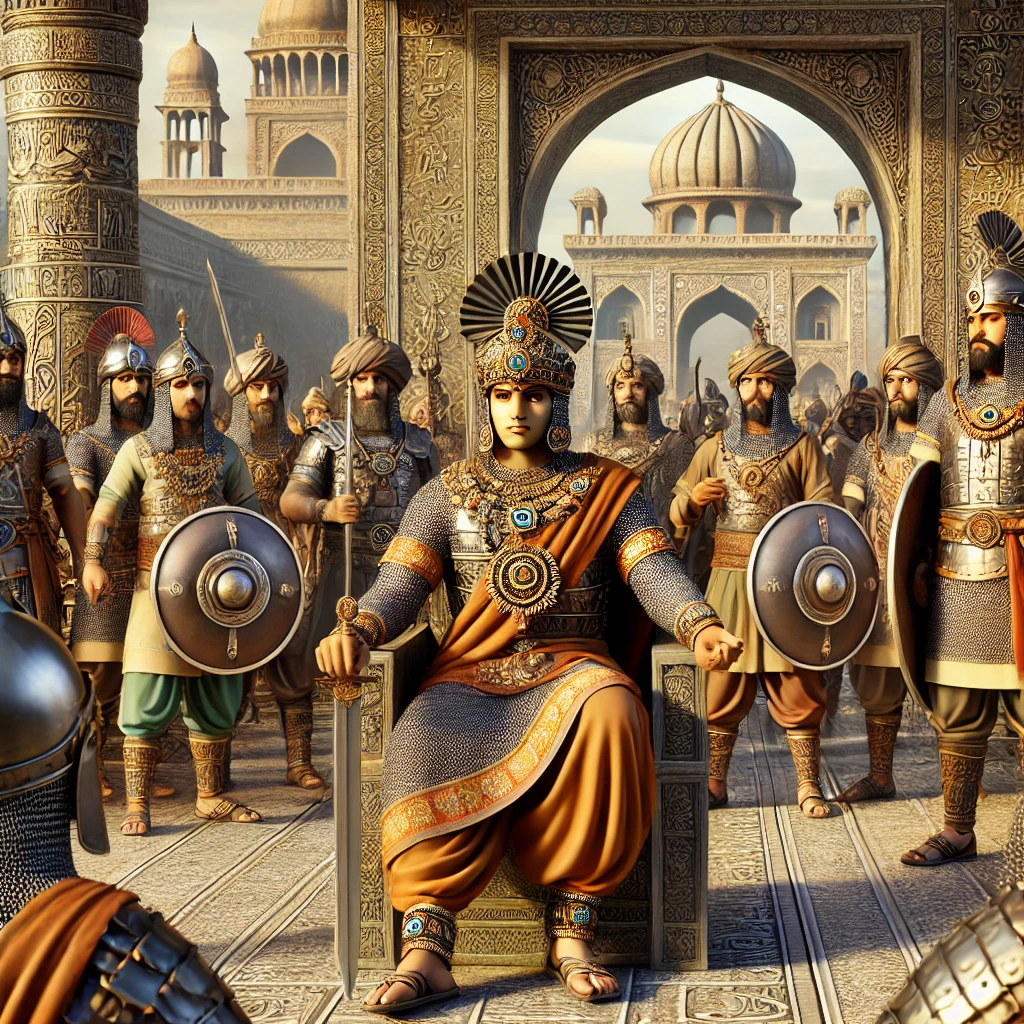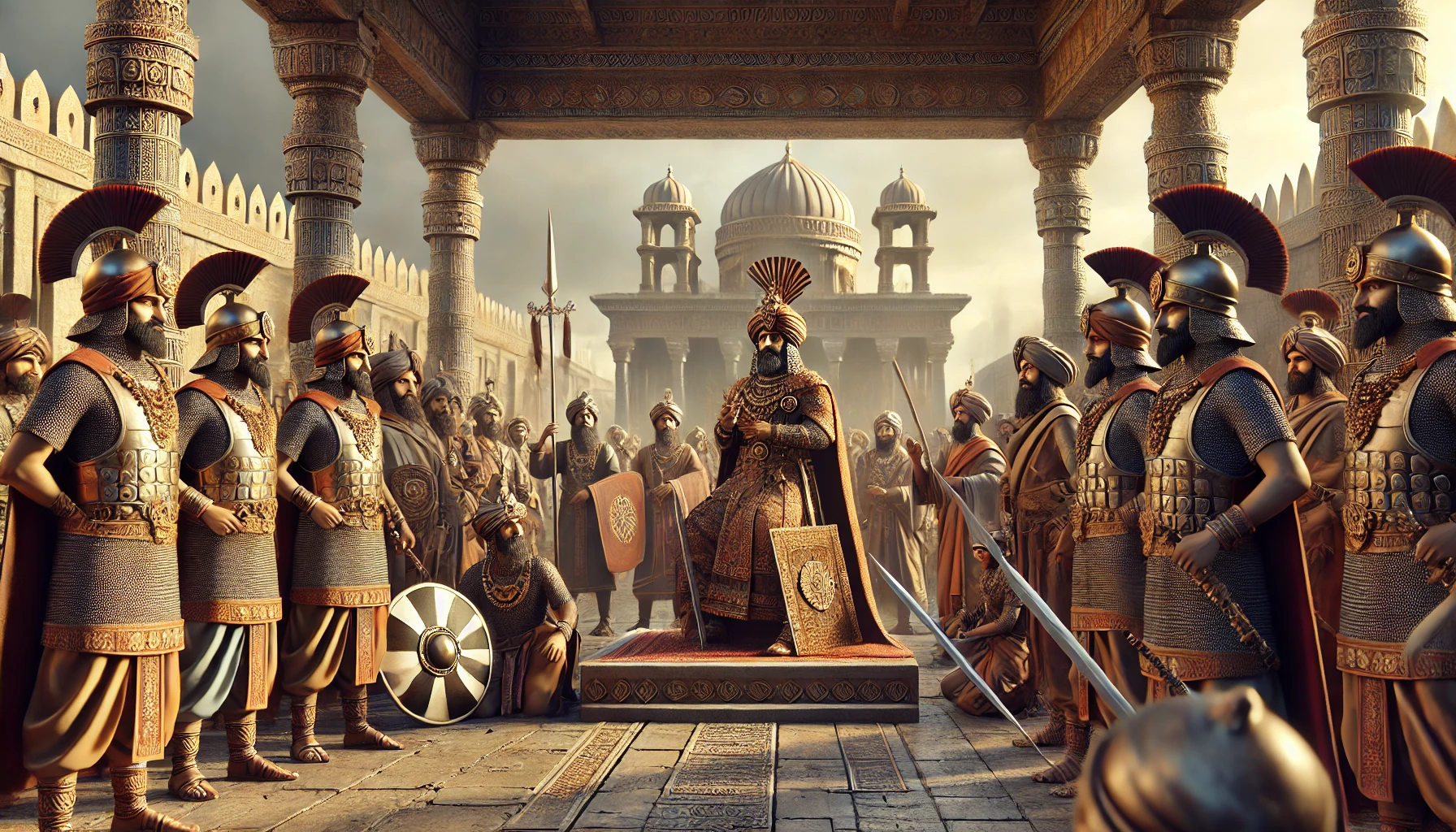The Indo Parthians were one of the most powerful forces in the early centuries CE. The dynasty was a significant segment of the Indian subcontinent and cultivated some sort of cultural simplicity with the meaning of that past heritage. It continues to influence modern understanding of ancient India.
- Indo-Parthians let different cultures speak to each other, therefore, they gave birth to a beautiful sense of traditions.
- They made excellent buildings that reflected their architectural genius and creativity.
- Dominated important trade roads that connected east to west, thereby enhancing trade and cultural interchange.
Originating in the Parthian Empire of what is now Iran, the Indo-Parthians were a tribe that migrated into the Indian subcontinent during the 1st century CE. The movement was one part of a larger movement of nomadic tribes looking for new lands and territories in which to settle down; besides expanding their spheres of influence, it also bore significant cultural exchanges shaping the landscape of the region’s history.
| GS Paper | General Studies I |
| Topics for UPSC Prelims | Indo-Parthians: Origin, cultural impact, and decline. Major cities, art, and architecture of Indo-Parthians. |
| Topics for UPSC Mains | Indo-Parthian’s political and cultural influence on ancient India, Interactions with other kingdoms, and Decline of their rule. |
Origin of the Indo-Parthians
The Indo-Parthians originated from the Parthian region of the then-famous ancient Persia. The Parthians were famous for their excellent horse-riding skills and were a great military force. That thing they brought along when they settled in India. This was not an invasion; rather, it was quite a complex assimilation and adaptation process.

Establishment in India
When they entered the Indian subcontinent, the Indo-Parthians went ahead to establish their kingdoms within areas that partly constitute parts of Pakistan and northwest India. They soon assimilated into the culture of this area, therefore absorbing the Indian elements in governance, art, and religious systems within their community.
System of Government
Indo-Parthians had an organized political system that allowed for effective governance over their varied territories. They also had a bureaucratic system with different appointed governors in charge of various regional management and functioning areas. This helped in maintaining order, collection of taxes, and application of justice.
Military Might
The military power of the Indo-Parthians may explain why they could hold onto their conquered lands for such a long period. They were skilled in the use of cavalry; which was a crucial factor during this period since warfare involved the element of mobility. They would thus successfully defend themselves against invasions and successfully conquer strategic places, thus spreading their influence further into the Indian subcontinent.
Cultural Contributions
The Indo-Parthians made immense cultural contributions toward the prosperity of the local society. They were relatively responsible for the development of art, architecture, and religious practices; therefore, a prosperous cultural environment developed.
Art and Architecture
The Indo-Parthian artistic expressions were a cultural mixture of Parthia and India. They built several magnificent structures, including stupas, temples, and palaces, which comprise intricate carvings and elaborate designs. One fine example is that of rock-cut caves at Gandhara, which gives evidence of a cultural mixture between Greek and Indian artistic concepts.
Religion and Beliefs
Religion was the backbone of Indo-Parthian life. The dynasty followed several religions starting with Zoroastrianism, which dominated their mother country, but also Buddhism and Hinduism, that was dominant in India. The religious diversification attributed to a dynamic spiritual environment in which the ideas and practices intermingled.

Economic Impact
Indo Parthian had considerable influence on the economics of the regions that they governed. They built and fortified strategic trade routes which would flow across the East and the West.
Trade and Commerce
Trade was at the core of the Indo-Parthian economy. They traded luxury goods such as silk, spices, and precious stones, much in demand in both Eastern and Western markets. This trade network played a very significant role in the Silk Road for the Indo-Parthians to interact with merchants from all distant lands even as far as Rome and China.
Agriculture and Resources
Agriculture flourished under the Indo-Parthians as they brought modern agriculture techniques and irrigation schemes. They cultivated several crops-wheat, barley, and rice -which directly added to the evolution of these dynasties in general. In addition, the Indo-Parthians extracted minerals and precious stones from nature, thereby further boosting their economic power.
Legacy of the Indo-Parthians
Even today, the legacy of the Indo-Parthians is reflected in the Indian subcontinent’s cultural and historical vision. Their contributions are, therefore, deeply influential, shaping subsequent dynasties and regional cultures.
Architectural Heritage
Many Indo-Parthian structures, like stupas and temples, exist today that speak of their architectural skills. Scholars, tourists, and historians come to see these monuments to understand the rich history of the region.
Cultural Integration
The Indo-Parthians remained successful in integrating their culture into the local traditions, thus leading to a rich and diverse society that continues until this day. This foundation, which the Indo-Parthians created, allowed future dynasties to essentially expand and develop from it.
Impact on Successive Dynasties
The governance, military strategies, and culture of the Indo-Parthians heavily impacted later rulers in the region. Their models of administration and trade helped push subsequent empires, such as the Kushans and the Gupta Empire, to be in a similar policy.
Challenges Faced by the Indo-Parthians
The Indo-Parthians managed to win many challenges, but they also faced many issues that would cause their decline. These included internal conflicts and external pressures that tested their resilience.
Internal strife
Power struggles and succession wars were characteristic Indo Parthian society. The internal power struggle quite often weakened their rule, thereby resulting in fragmentation and loss of control over territories. Moreover, rival factions often contend for power, creating instability in the kingdom.
External Threats
They had to bear the brunt of neighboring empires and tribes. The Scythians and Kushans indeed proved stern challenges for them. They needed to be constantly watchful and to make strategic alliances to help them to maintain their sovereignty. When such a strong defense mechanism was failing, the power base eroded gradually.
Decline of Indo-Parthians
The Indo-Parthians experienced a slow decline due to the impact of several causes. Over the years, their territories were occupied by the newly emerging strong empires, causing the loss of their dynasty.
Emergence of New Empires
While new empires began to rise in the region, it was becoming difficult for the Indo-Parthians to hold on to their position. The emerging Kushan Empire with extensive resources and military power challenged the Indo-Parthians.
Economic Causes
The economic crisis was another aspect that led to their downfalls. Trade and resource management was disrupted, which resulted in a bad economy. It became hard for them to sustain their kingdom for a long time. With the worsening security of their trade routes, the amount of money flowed reduced, which put an obstacle in their way of governance.
Conclusion
The Indo-Parthians were an extraordinary dynasty that managed to shape the Indian subcontinent’s history in more ways than one. Their attributes such as cultures, politics, and economics well intertwined to leave an indelible mark on the region. Their legacy is important because understanding their cultural, political, and economic contributions helps us appreciate the rich tapestry of ancient civilizations that have influenced modern society.
| Indo-Parthians UPSC Notes |
| 1. The Indo-Parthians emerged from the Parthian Empire around the 1st century CE, establishing kingdoms in parts of Pakistan and northwestern India. 2. Their political structure featured appointed governors overseeing regions, which helped maintain order and facilitated effective governance. 3. The Indo-Parthians excelled in military strategies, utilizing skilled cavalry to defend against invasions and expand their territories. 4. They contributed significantly to art and architecture, creating structures that reflected a blend of Parthian and Indian styles, particularly in regions like Gandhara. 5. The Indo-Parthians played a crucial role in trade by controlling vital trade routes, enhancing economic prosperity through the exchange of luxury goods. 6. Their decline was influenced by internal conflicts, external invasions, and economic difficulties, leading to the eventual rise of the Kushan Empire. |



